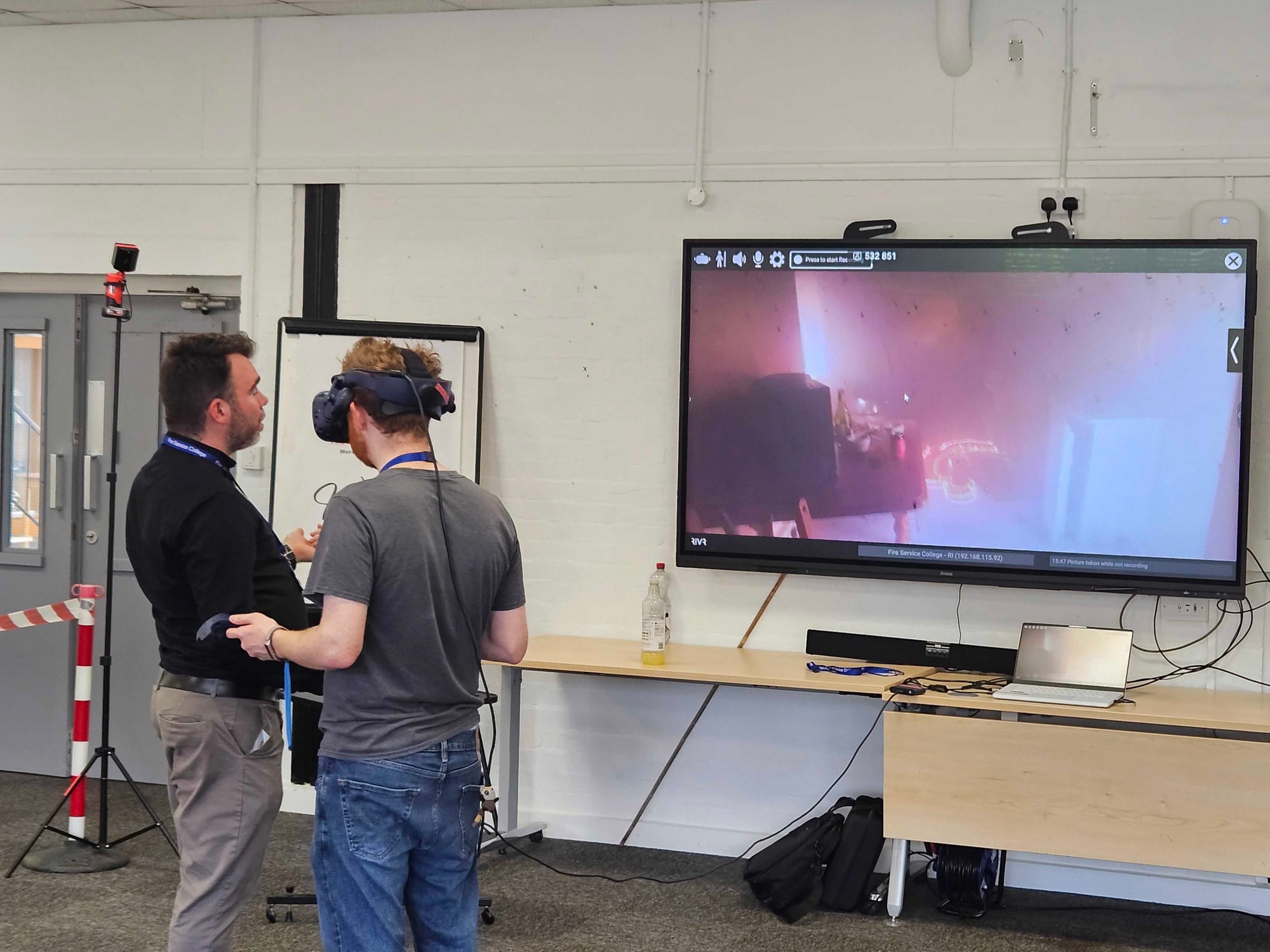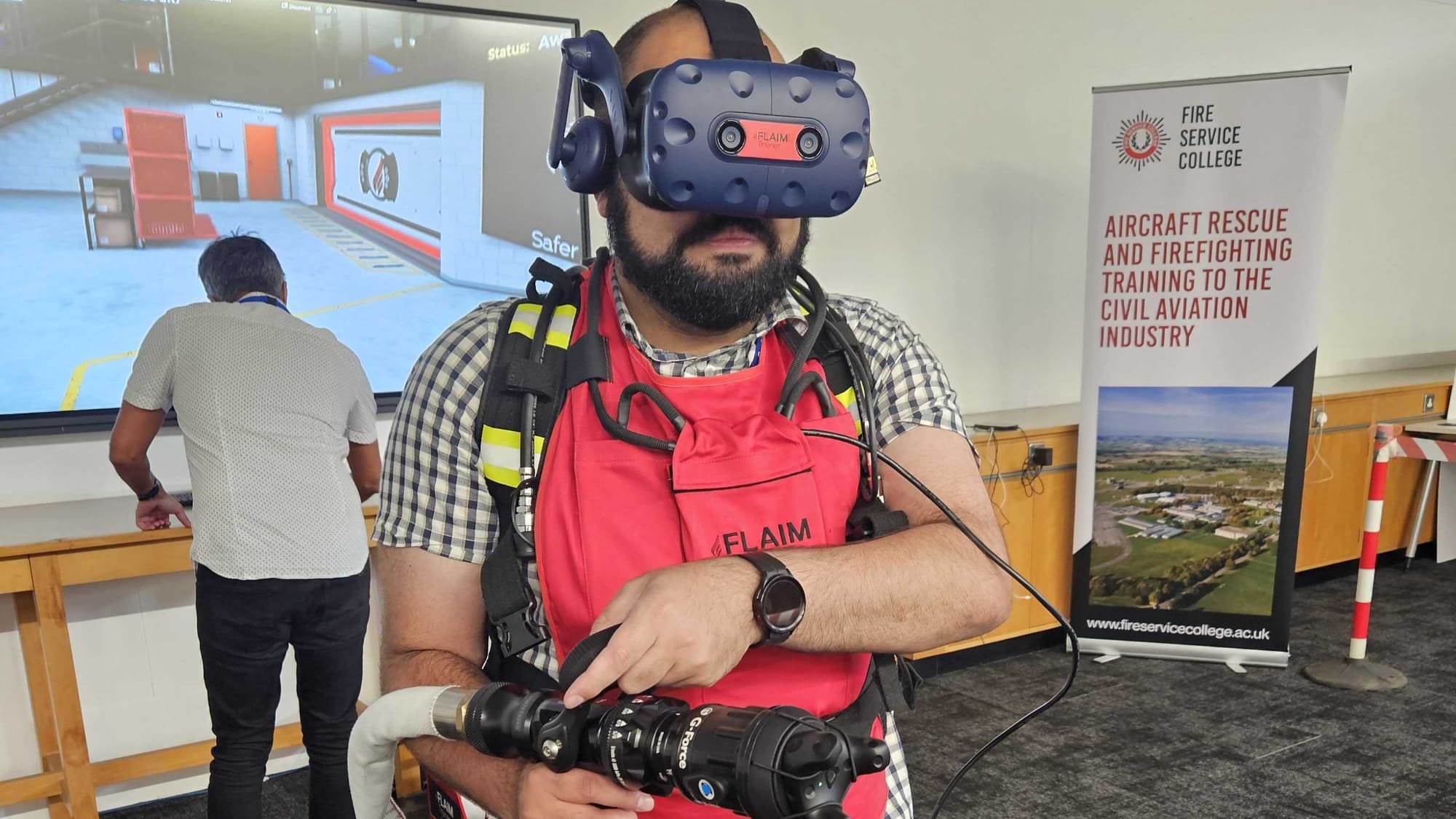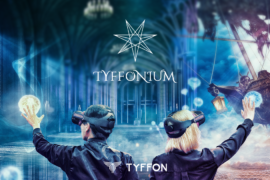VR has many use cases beyond entertainment and with HTC, RiVR’s fire safety program aims to minimize training risks. Here’s what we thought.
Enterprise VR software isn’t something I often use. I usually focus on VR’s consumer side, which generally leads me towards games and movies. I firmly believe XR devices must go beyond entertainment to ever truly become mainstream, so I was curious when HTC invited me to a VR fire safety training demonstration last month.
0:00
Muted clip from Step Inside – RiVR’s Virtual Reality Fire Investigation Solution
At the UK’s Fire Service College, my recent visit began with a facility tour that showcased more traditional methods of training firefighters – a nice contrast before I went hands-on with two bespoke experiences created by RiVR, working with FLAIM and XVR. Some of these have been around for years, and RiVR’s also created other scenarios like counter-terrorism training scenes for the UK Home Office and hazardous materials training.
Both demos used a Vive Pro, an outdated choice now but it was initially chosen due to the headset’s fidelity and eye tracking. That said, I’m told the experience is compatible with other VR headsets like the Vive XR Elite. Built in Unreal Engine, my initial demo didn’t use any specialist equipment beyond the headset and wand controllers, though it was enlightening.
This scenario tasks firefighters with investigating the cause of a kitchen fire, assisted by tools like a torch and camera. Each item was added using a photogrammetry scan for a more realistic appearance, and I appreciate the level of detail. I checked for scorch marks, plug sockets, and whether any items had been moved. It’s an interesting contrast with real-life procedures since you can’t move objects; a second group investigates the scene after the initial inspection.

The second demo introduced some intriguing specialist equipment, chiefly a FLAIM Trainer haptic vest that simulates heat when moving closer to a virtual fire. As someone dressed in lighter clothing on a hot summer day, I can only respect those attempting this program in full firefighting gear, and it didn’t take long to begin feeling the heat.
I’m no stranger to haptic vests thanks to bHaptics and In Pursuit Of Repetitive Beats, yet this sensation was markedly different. I could feel the heat as I tried containing this threat even on the lower heat settings, signaling danger effectively without the risk of breathing in toxic smoke like a real-life training course would contend with. I could feel myself sweating and found the experience more physical than I initially envisioned.
Complementing this immersive approach is a fire hose accessory that provides powerful force feedback while spraying these virtual fires. Twisting the nozzle created different types of spray, pushing the handle to certain positions adjusted the flow’s strength, and a small button on it allowed me to teleport across affected locations. When handled in real life, I can see why these hoses usually require a second pair of hands.
0:00
Clip of Henry Stockdale demoing the program
This demonstration provided an intriguing view into the enterprise market for VR software. RiVR states that this software isn’t intended as a replacement for real-life training but rather to complement that experience. If we can use virtual reality to better train firefighters, I’d be keen to know what other occupations would benefit from a similar approach, and I’d certainly give similar VR training programs a try.





